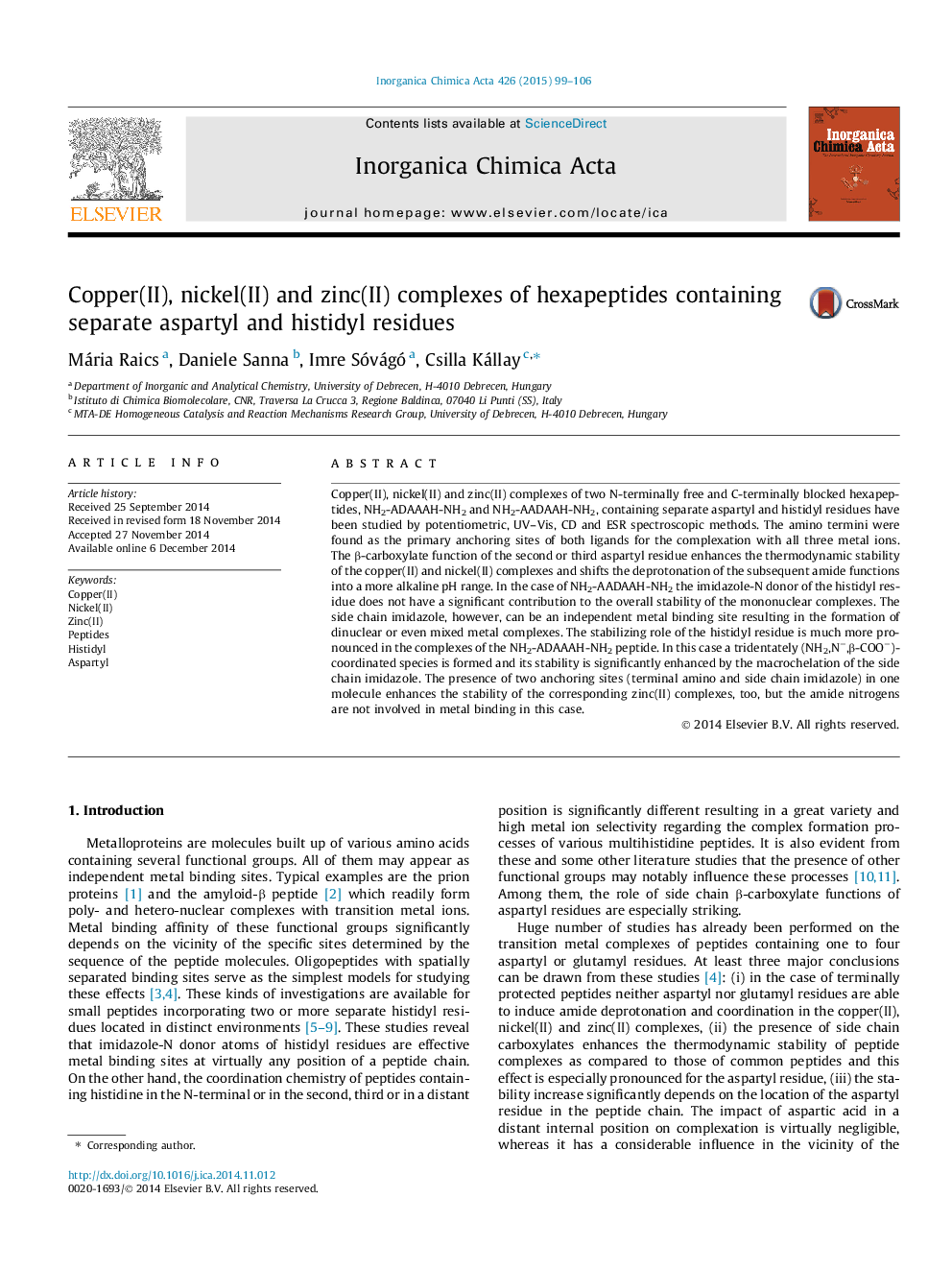| کد مقاله | کد نشریه | سال انتشار | مقاله انگلیسی | نسخه تمام متن |
|---|---|---|---|---|
| 1306733 | 1499163 | 2015 | 8 صفحه PDF | دانلود رایگان |

• Both peptides contain two well separated metal binding sites.
• The amino termini are the primary anchoring sites for both ligands.
• The presence of imidazole side chain results in dinuclear and mixed metal complexes.
• The stability of ADAAAH complexes is greatly enhanced by the side chain imidazole.
Copper(II), nickel(II) and zinc(II) complexes of two N-terminally free and C-terminally blocked hexapeptides, NH2-ADAAAH-NH2 and NH2-AADAAH-NH2, containing separate aspartyl and histidyl residues have been studied by potentiometric, UV–Vis, CD and ESR spectroscopic methods. The amino termini were found as the primary anchoring sites of both ligands for the complexation with all three metal ions. The β-carboxylate function of the second or third aspartyl residue enhances the thermodynamic stability of the copper(II) and nickel(II) complexes and shifts the deprotonation of the subsequent amide functions into a more alkaline pH range. In the case of NH2-AADAAH-NH2 the imidazole-N donor of the histidyl residue does not have a significant contribution to the overall stability of the mononuclear complexes. The side chain imidazole, however, can be an independent metal binding site resulting in the formation of dinuclear or even mixed metal complexes. The stabilizing role of the histidyl residue is much more pronounced in the complexes of the NH2-ADAAAH-NH2 peptide. In this case a tridentately (NH2,N−,β-COO−)-coordinated species is formed and its stability is significantly enhanced by the macrochelation of the side chain imidazole. The presence of two anchoring sites (terminal amino and side chain imidazole) in one molecule enhances the stability of the corresponding zinc(II) complexes, too, but the amide nitrogens are not involved in metal binding in this case.
The metal binding ability of the peptides is pH-dependent; complexes of NH2-ADAAAH-NH2 predominate in acidic solution, while binding to NH2-AADAAH-NH2 is favoured in alkaline samples.Figure optionsDownload as PowerPoint slide
Journal: Inorganica Chimica Acta - Volume 426, 24 February 2015, Pages 99–106